
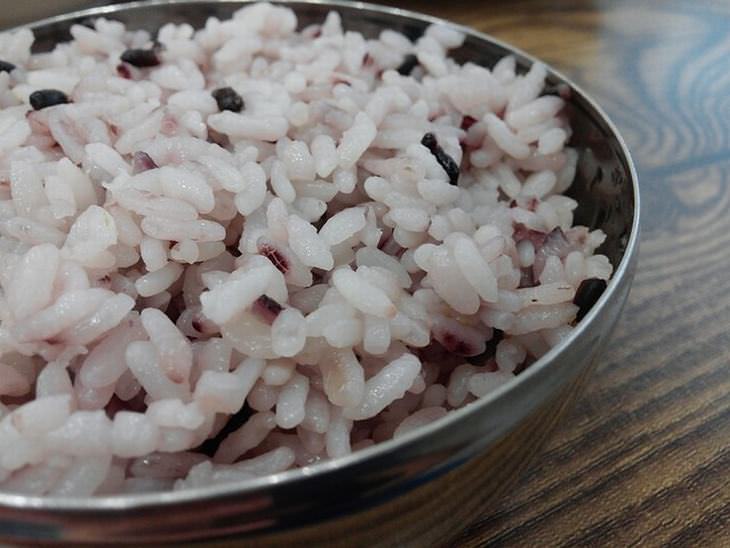
The traditional way to cook rice
Countries in Asia cook rice using two different methods:
1. Using a rice cooker: This special pot is designed to cook rice. In this method, the rice is washed and loaded in the cooker with water. The ratio typically used is 1 cup water with 1 cup rice. The cooker keeps the rice warm until it is ready to be eaten.
2. In a pot: A pot is used if you do not have a rice cooker available. Apply a ration of 1:1, rinse the rice and cook. However, unlike the rice cooker, in this method, an external heating source is used. To soften, the rice usually takes about 30 minutes. With this method though, wait for the water to dry out before lowering the heat. This will prevent the bottom portion of the rice from becoming overcooked.
Counting calories
One cup of cooked white rice contains around 204 calories, so when halved, you will only get 102 calories in a one cup serving. Here are the nutritional facts of rice:
• Total carbohydrates 44.5g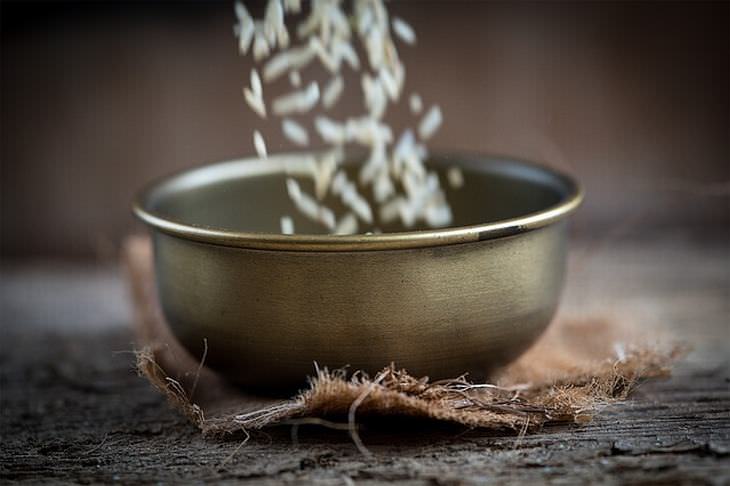
Cooking rice for less calories
This cooking process will reduce calories in half. Here is the secret to the cooking process:
1. Add coconut oil to the boiling water. Prior to doing so, weigh the amount of rice you are cooking and add 3 percent of that weight in coconut oil.
2. Place the rice in the pot and let it cook as usual.
3. When done, place the rice in the refrigerator and let it cool for about 12 hours before eating.
This method of cooking rice was discovered by a student at the College of Chemical Sciences in Sri Lanka, together with his professor. The two individuals have been looking into rice and seeking to discover the possibility of changing its starch content, by looking into its chemical background. But, what makes this method work?
Our food generally consists of two types of starches: digestible and resistant starches. Cooking rice in the traditional way promotes digestible starches - starches that the body can easily digest, which consequently speeds up the conversion of starch to glucose and then energy. While this may seem like a good alternative, if the energy is not used up, the glucose will turn into fat and will be stored in the body, adding to your overall weight.
Therefore, to make rice more weight loss friendly, the digestible starch is turned into resistant starch which occurs due to the introduction of the lipids in coconut oil and the immediate cooling of the rice. The lipids interact with the rice, turning the digestible starch into resistant starch. What's more, the immediate cooling fortifies the production of the resistant starch, making each serving healthier.
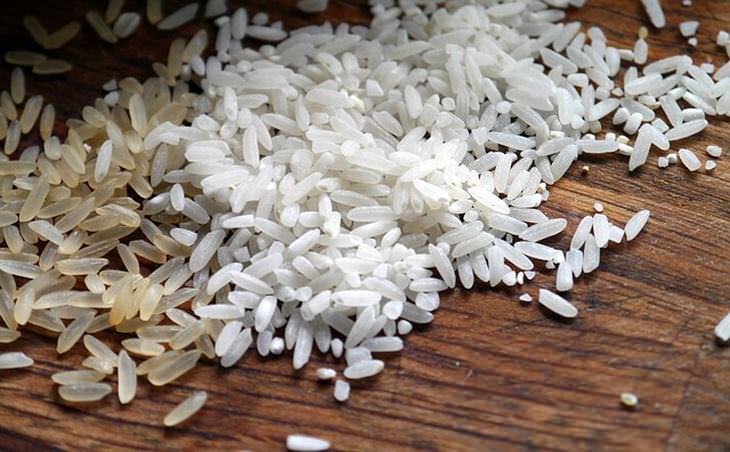
How healthy is this method of cooking rice?
It's called resistant starch because the body has a hard time digesting it. But this is not necessarily a bad thing. The slow burn means that the transition between carbohydrates to glucose to energy is slow, which means that there is a good chance you will be burning off all the energy as it is released in the body. Therefore, this conversion process makes it possible for people to delay the release of calories. What's more, you will feel full and energetic during the day, and possibly, less hungry too.
So what are you waiting for? Give this method a go and see how it can work for you.

These Foods Can Help Fight the Effects of Arthritis
Include these 12 foods in your diet to reduce the effects of arthritis - they have been shown to fight inflammation, strengthen bones and boost the immune system.
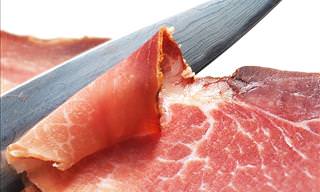
WARNING: Learn About a US FDA-issued Ham & Beef Recall
The US Food and Drug Administration has issued two separate recalls for different kinds of meat products. Find out more to stay safe here.

These Foods and Drinks Are Terrible For Your Pearly Whites
Sadly for us, there are many of our favorite foods and drinks that are simply no good for our teeth. Here are 10 of the worst foods and drinks for tooth stains

These 7 Types of Hunger Can Cause You to Gain Weight
When a craving hits, determine where the source of your hunger is coming from with the help of this guide.

Keep Your Arteries Clean by Eating These Foods Every Day
Cardiovascular diseases are on the increase. However, eating these foods can go a long way to ensuring that you do not fall prey to such diseases.

4 Best Healthy Cooking Sprays Without Nasty Additives
With the help of cooking sprays, food doesn't stick, nor does it become overly greasy or soggy. But what's the issue with these cooking sprays? What cooking sprays are safe to use? See here
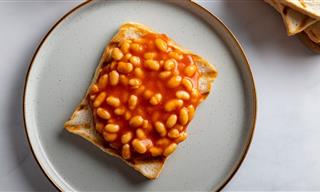 9:45
9:45
These Breakfast Recipes with Canned Beans Are Genius!
Turn canned beans into delicious morning dishes with these tips.

Make Much Better Eggs With These 10 Awesome Tips
You may think you're able to cook eggs well, but these tips will simply take your ability to a whole new level. Learn how to cook eggs right in this post.

Enjoy Guilt-Free, Delicious Brownies With This Great Recipe
This is a sweet brownie treat you'll definitely want to try - delicious, guilt-free four-ingredient brownies! Read the recipe here.

5 Best Ways to Prepare Fish While Keeping them Nutritious
In this article, we'll explore the eight most common ways of preparing fish and their effects on this beloved and healthy food.

3 Glasses of Sunshine: Drink Recipes for the Hot Weather
Spring and summer are on their way, so what better time than to start perfecting your drink making skills. These sunny juices will quench your gaping thirst.

This Delicious Bread Has No Carbs, No Gluten and No Sugar
Known as cloud bread, this carb and gluten free bread is soft, airy and fluffy, and so delicious, it practically melts in your mouth. All you need are three ingredients to make it - let's take a look.

13 Delicious Dishes You Can Make Using a Waffle Iron
I didn't think I could find so many ways to use a waffle iron to create delicious meals.

How to Make Your Favorite Sandwich... Without Bread!
If you're thinking about quitting bread at least for a while, you can still enjoy your favorite sandwiches by replacing the bread with vegetables. Here's how.

9 Ice Cream Recipes You Can Make with a Food Processor
9 easy, healthier ice cream recipes that you can prepare in a food processor.
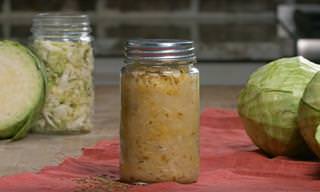
If You Like Sauerkraut, You'll Love This Recipe
Sauerkraut isn't one of the most popular foods out there, but it sure is healthy. Here's a simple recipe to teach you how to make the perfect sauerkraut!

KFC's Original Fried Chicken Recipe is Finally Revealed...
Colonel Sanders' nephew reveals the original secret recipe for Kentucky Fried Chicken.

15 Peculiar Food Combinations That People Actually Love
Take a look at these weird food combinations that sound gross but are actually quite delicious.
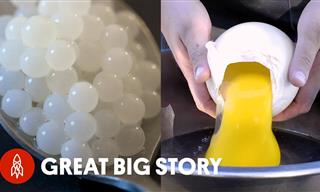 15:27
15:27
Around the World in 7 Delectable Egg Dishes...
Travel to different parts of the world in this video and discover 7 weird yet wonderful ways eggs are eaten around the world.

7 Tips That'll Help You Say Goodbye to Dry Pork Chops!
Follow these fantastic tips and you'll never have to suffer a dry pork chop again!

10 Piping Hot Soups to Keep You Warm Throughout Winter
These soups are amazingly tasty, and will keep you warm on a cold winter's day. Yet the most amazing thing is that they are all under 300 calories.

This Has to Be the Most Guilt-Free Bread Recipe Ever!
This cloud bread is carb, gluten and sugar-free. Despite those facts, it's still light, fluffy and utterly mouthwatering. Learn how to bake it today.
 4:16
4:16
Turn a Regular Egg Into Scrumptious Mini Fried Eggs
Check out this great video tutorial that'll take your eggs and turn them into a mini fried treat!
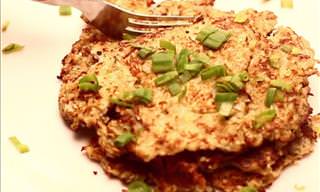
These Are the Healthiest Hash Browns Ever Prepared!
Yes, you can have hash browns for breakfast, with this healthy and delicious cauliflower alternative recipe. Watch and learn!
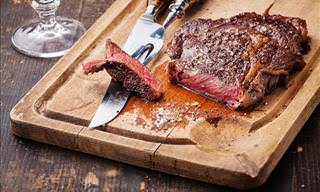
Eradicate These Mistakes in Order to Cook a Perfect Steak
Cooking meat, especially steaks, can be puzzling. Here are 8 common mistakes that most people make when cooking a delicious steak.

These Tasty Sausage Skewers Make a BBQ Complete!
This recipe will show you how to make delicious Beer and Mustard Sausage skewers.
 4:26
4:26
THIS is Why I Love Italian Cuisine!
What makes the Italian cuisine one of the best in the world? Watch and learn.

Cooking Mistakes: Keep These Foods Out of the Microwave!
It may seem like a good idea to reheat the following foods in microwave, but doing so could actually be a health hazard. Read on to learn more.

10 Vegetables and Herbs To Buy Once and Re-Grow Forever...
Some parts of vegetables and herbs that you don't normally use and just throw away can actually be used to re-grow themselves time and again. Find out more.
 7:34
7:34
Bring Variety to Your Morning With 10 Iced Coffee Drinks
Bring variety to your breakfast with these delicious and refreshing iced coffee drinks!
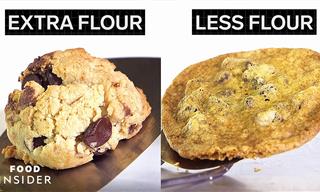 6:48
6:48
11 Common Cookie Baking Mistakes And Their Results
Every baker knows there is a delicate balance to be kept in chocolate chip cookies. This is how the 11 most common mistakes will affect your final batch.

This Yummy Ice Cream Is Made with Only 2 Ingredients!
You'll never believe that you can make ice-cream with only 2 ingredients, that is until you watch this video and then try to make this yummy dessert yourself!
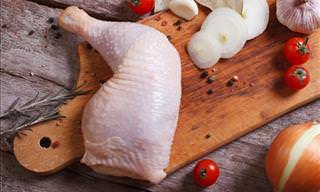
Incredibly Delicious and Easy-To-Make Chicken Dish
A simple recipe which will leave you with mouthwatering chicken every time.
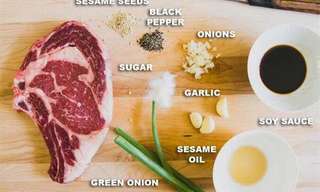
Guide: The Right Seasoning Can Do Wonders!
A steak is easy to make. A well seasoned one, though, can make all the difference.
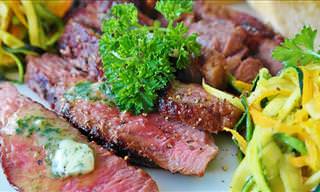
The Perfectly Seared Steak: All You Need to Know
Now that its winter, our steak cooking options are fairly limited to the stove and oven, but this isn’t a bad thing...
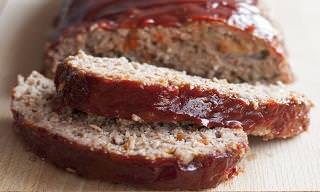
Make Delicious Meatloaf Using This Simple Recipe!
This recipe teaches you how to make the most tender, most delicious meatloaf that you have ever had.
 1:39
1:39
An Innovative Twist Using Eggs for a Healthy Breakfast Idea
Eggs are one of my favorite food. They are so versatile and can be used in a number of ways. Check out this innovative recipe.

Make 10 Scrumptious Dishes Using Only 3 Ingredients!
When I watch a cooking show on TV or grab a recipe book, they all look delicious, but each one requires so many ingredients – some of which I can’t even find. Using only 3 ingredients, these recipes will allow you to quickly make mouth watering dishe

These Peppers Are So Hot, They’ll Blow Your Mind!
Spice is great for every diet and these peppers from all over are perfect for making any dish the searing hot with only a small amount.

I Never Realized You Can Serve a Watermelon Like This!
In this article, you’ll find creative serving suggestions, efficient ways to cut a watermelon, and even a guide to choosing the perfect specimen.
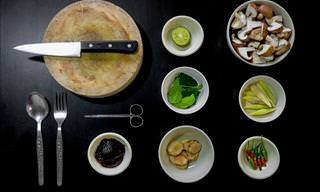
I Hope These Essential Kitchen Tips Make Your Life Easier
These tips will make you a master of your kitchen.
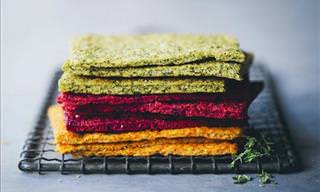
You Won't Believe What This Healthy Bread is Made of...
Wow, have you tried these new veggie flatbread recipes?! They are healthy, tasty, gorgeous and easy. Those are a few of my favorite things.

You Do Not Need Outdoor Space to Grow These Common Fruits
You do not need any outdoor space to grow these delicious, common fruits.
 2:55
2:55
Why Spend Money On Yogurt When You Can Make It Yourself?
Why spend money on buying yogurt when you can make it easily at home with just two ingredients?
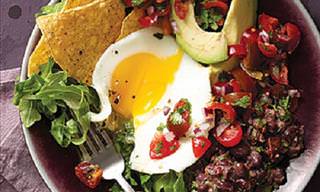
You've Got to Try these Delicious and Comforting Winter Salads
These hearty, comforting salads will take your mind off classic winter, comfort food.

Korean Fried Chicken: This is the Ultimate Fried Food!
If you like fried chicken you will simply love this Korean take on our favorite fried food. What better way to spice up your fried chicken that by learning this!
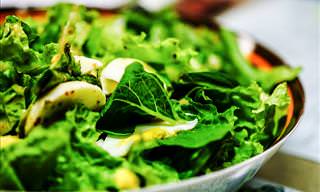
Here's How to Make the Tastiest Salad Dressing!
These charts briefly explain how best to go about making a variety of delicious salad dressings.


